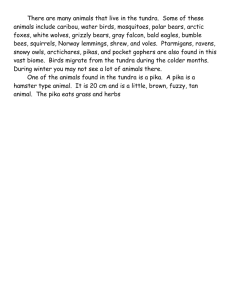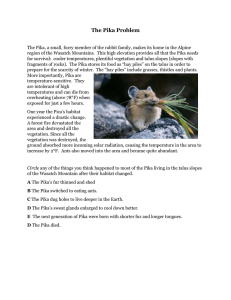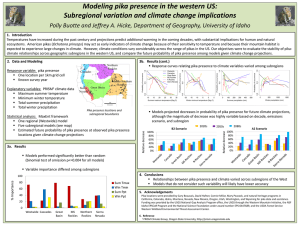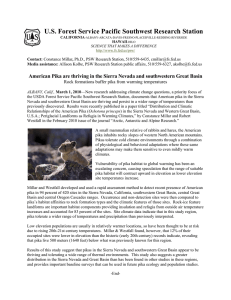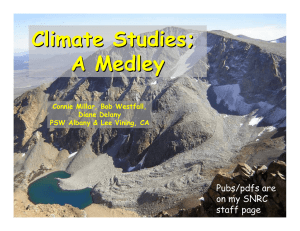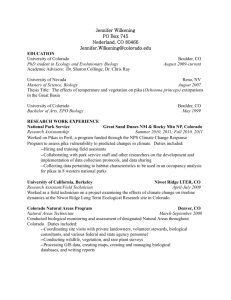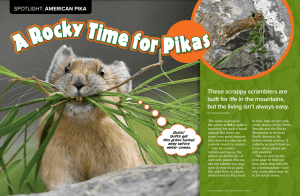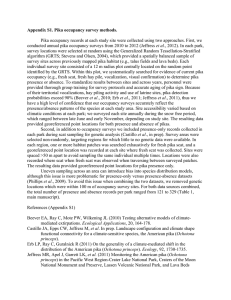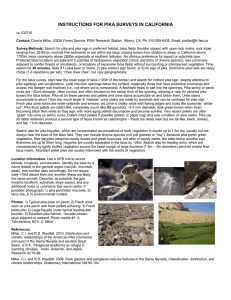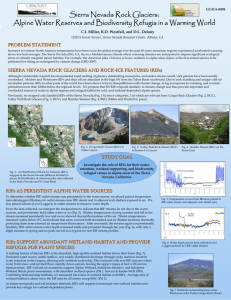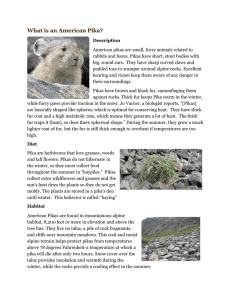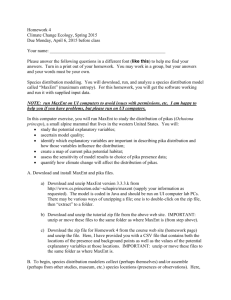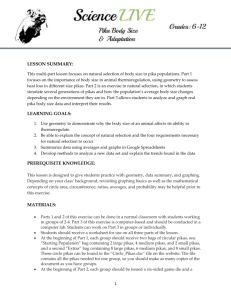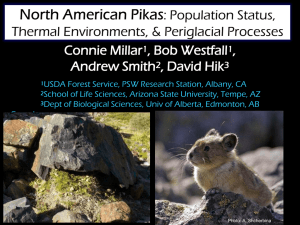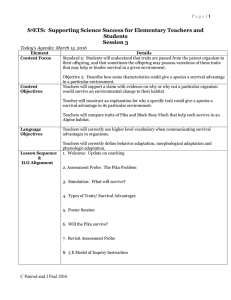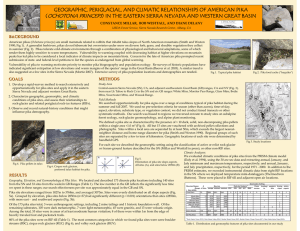pika creature feature1 - Colorado Springs School District 11
advertisement
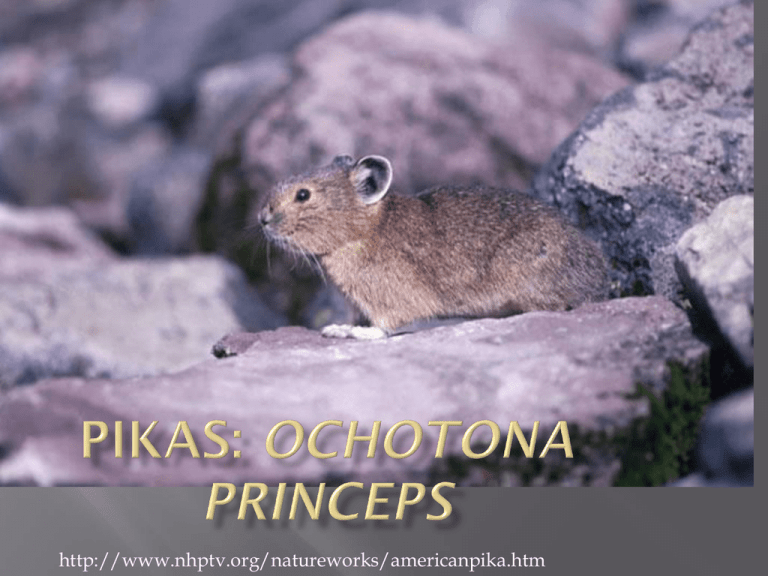
http://www.nhptv.org/natureworks/americanpika.htm http://www.arkive.org/americanpika/ochotona-princeps/video-00.html http://video.nationalgeographic.com/video/p layer/news/animals-news/pika-in-perilmissions-wcvin.html The American pika can be found in western North America from central British Columbia in Canada to Oregon, Washington, Idaho, Montana, Wyoming, Colorado, Nevada, California and New Mexico. where it has a widespread but discontinuous distribution Isolated rocky alpine regions called talus formations Elevation in the north: sea level to 3,000 meters Elevation in the south: above 2500 meters Predators: eagles, hawks, coyotes, bobcats, foxes, and weasels Eats a variety of green plants like grasses, sedges, thistles and fireweed. It will eat some food on the spot and it will carry some food away and store in a pile or "haystack." Predator Alert System for other animals: Between mowing the grass and herbs Barking at predators http://raysweb.net/wildlife /images/pika_new.jpg http://www.animalspot.net /wpcontent/uploads/2011/07/Pi cture-of-American-Pika.jpg http://wwwdelivery.superstock.com/ WI/223/1990/PreviewComp/SuperSto ck_1990-18500.jpg http://w ww.nps. gov/feat ures/yell /slidefile /mamm als/pika /Images /01645.jp g ?????? Really—after looking hard, I couldn’t find a single site with an actual number. A study conducted between 1994 and 1999 found that 7 of 25 monitored American pika populations had become extinct, partially due to climate change More studies are being done The American pika is classified as Least Concern (LC) on the IUCN Red List In view of its decreasing populations, six subspecies of the American pika are categorized by the U.S. Fish and Wildlife Service as ‘Species of Concern’, meaning it is important that their populations are monitored Was considered as a potential addition to the endangered species list Obama administration rejected it: not enough evidence of population loss Length: 6.2 – 8.5 inches and Weight: 4 – 6.3 http://media3.web.britannica.com/ebmedia/16/3516-00467E3395A.jpg The pika is a very vocal animal Warns of predator intruders Males sing during mating season Dense fur for surviving winter Emerging from den in winter. http://www.youtube.com/watch?v=I5KcjBHOy F0 may be one of the first mammals impacted appears to have contributed to local extinctions of pika populations 'canary in the coal mine' when it comes to the response of alpine and mountain systems to global warming. From the World Wildlife Fund Mountaintop habitat means they cannot move further up the mountain (no refuge) Cannot migrate across valleys to a taller mountain (too risky and too hot and too far). Other animals are moving into their habitat Climate may be interacting with other factors such as proximity to roads and smaller habitat area to increase extinction risk for pikas, creating detrimental synergistic effects. Young in the nest Video Link: http://www.arkive.org/americ an-pika/ochotonaprinceps/video-09.html Entering nest Pikas do not inhabit burrows which could mitigate extreme temperatures and are highly active aboveground during the hottest months of the year. In the Spring and Summer, they hay. If plants mature faster, they cannot hay fast enough to store enough for winter. Dense fur may cause them to overheat. Freezing in the winter due to less snow pack Snow acts as insulation. Domestic and feral cattle American pika populations are smaller where cattle graze. Non-native plant species are also spreading across the American pika’s habitat Wildfires Reduces food availability The American pika is afforded protection in a number of reserves developing management plans for its populations, with further research into its population numbers, trends and range, as well as its habitat status and threats, and the identification of new protected areas it is illegal to hunt this species throughout its range Suitability modeling: Geographic Information System Help to predict when and where pika populations will decline http://www.mnn.com/earth-matters/climateweather/videos/assignment-earth-pikas-andclimate-change How come many scientists say that Pikas are like the 'canary in the coal mine' when it comes to the response of alpine and mountain systems to climate change?
